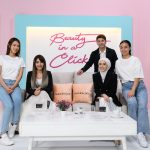By Kunal Sinha
The key considerations for positioning any brand are differentiation, relevance and credibility. In the fiercely competitive beauty and skincare market in Asia, how are the trailblazers winning the hearts and wallets of consumers?
Riding piggyback on the popularity of their cultures, Asian beauty brands are giving global players a run for their money. Their appeal is particularly strong in SE Asia, a market worth USD 33.1 billion[1].
SE Asian beauty consumers show three typical characteristics[2]:
- They emphasize physical beauty, with 62% of consumers saying they experience beauty-related anxiety
- They are habitual buyers – 96% of consumers have bought products in the last 3-6 months
- They are willing to explore diverse shopping experiences, with 54% keen on trying new products.
How formulation helps Korean beauty brands build relevance and differentiation
K-beauty brands account for 12% of Southeast Asia’s overall beauty market, and they have steadily been gaining popularity.
Driven by their experimentative nature, modern beauty customers are conscientious, and do their own research. They are acutely aware of their skin types, skin issues, and products that would best suit their needs.
With South Korea’s growing prominence as an innovative trailblazer in beauty, there’s a rising consciousness towards specific product attributes associated with K-Beauty. These attributes include claims such as skin brightening, exfoliating and soothing.
Key factors such as unique formulations, innovative packaging, and affordable pricing make these brands highly attractive to consumers looking for high-quality products that deliver equally high efficacy.
With the rise of social media and e-commerce, these brands have been able to reach a wider audience. Ecommerce platforms like Shopee and Lazada have been key to popularising K-beauty brands in SE Asia, with Shopee accounting for as much as 73% of overall beauty sales.
Mass and premium brands alike are looking to meet the new aspirations for efficacy, ethical, experiential and authentic qualities amongst consumers, and the lines between the two segments continue to blur, and the ‘masstige’ space is further reinforced as a lucrative opportunity.
As the focus on ingredients intensifies and makes the lower price band more sophisticated, K-Beauty has been paving the way to grow masstige beauty.
Established and new beauty brands have been able to reassert their value to consumers with no-frills, results-driven products that deliver performance, regardless of price and K-Beauty is at the forefront of this as availability improves outside of South Korea.
Making the formula credible With the rise of “成分党” (Chéngfèn dǎng – ingredient-centric consumers, China faces a similar situation. Their regular use of social media and e-commerce has Chinese consumers more aware of how ingredients and formulas perform on their skin, and some brands have turned to international suppliers for high-quality manufacturing standards and pure ingredients.
C-beauty brands have been collaborating with global institutes to access high-quality ingredients.
Proya, a leading Chinese beauty manufacturer, signed a deal with Spanish active ingredients research institute LipoTrue S.L. in 2020 to cooperate on the development of new anti-wrinkle products. More recently, Proya China released the latest facial cream infused with the ingredient cyclopeptide 161.
By innovatively connecting the ends of the peptides, cyclopeptide 161 can deliver better results in delivering signals to skin cells for greater anti-wrinkle efficacy. A focus on such products drives Proya’s brand positioning as ‘Youthful Feeling. Science-based Power’.
Asian skincare brands (and consumers) are also aware that demand for sustainable products might outrun the supply of natural ingredients. This has led to the development of lab-made, plant-based biosynthetic ingredients, spearheaded by select APAC beauty brands.
Companies are researching plant-based biosynthetic ingredients that mimic the effects of natural ones and are already working on lab-grown alternatives. Brands like Shiseido, J-beauty brand Thinkin, and Singapore-based N&E Innovations are experimenting with bio-engineered compounds upcycled from organic waste.
Shiseido has introduced a new range of skincare products that utilize bio-engineered botanicals – products that deliver targeted treatments for various skin concerns, enhancing both appearance and health with sustainable ingredients. Such actions by the brand underpin its positioning ‘Beauty Innovations for a Better World.’
Harking back to tradition and sense of community
With Asian cultures characterized by rich beauty traditions and a strong community, it should not be surprising that several brands have chosen to be inspired by them.
As the clean beauty movement gains momentum, an increasing number of skincare brands are turning to traditional Chinese medicine (TCM) for chemical-free yet effective natural ingredients.
Inoherb was founded in 2000 by Feng Shuai, who comes from a family of traditional Chinese medicine practitioners. Using Chinese herbs in its formulations, the brand blends TCM herbal beauty with modern skincare technology, offering consumers natural, healthy, and effective skincare solutions.
Chinese herbs, integral to Chinese culture, are marketed as non-toxic and all-natural, appealing to many Chinese millennial beauty shoppers. Deeply rooted in local culture, Inoherb refines the essence of Chinese medicine to create a unique product line that meets the needs of consumers seeking natural beauty solutions.
Beauty influencer and YouTuber Renée Chow says, “I’ve always loved traditional Chinese medicinal (TCM) ingredients for my skin — as well as the synthetics — and my favourite formulas always have a balance of both.
From the TCM side, I learned so much about traditional extraction and preparation methods to get the most potency out of ingredients, as well as how to incorporate the latest synthetic ingredients to strengthen our skin barriers.”
With Chinese brands such as Pechoin and Chando also investing in delivering innovative products at affordable prices, incorporating TCM into beauty products looks to be a movement that is here to stay.
Indie beauty brands in China also have the ability to build strong communities and foster a sense of belonging among consumers, especially through social media platforms.
They create WeChat groups, grouping individuals based on their skin types and answering their questions. They also seek first-hand feedback on product usage to refine their offerings, encourage consumers to share their experiences and opinions on social media.
This provides each individual with a platform to contribute to the community. By leveraging these platforms, brands not only increase their authenticity and foster trust but also engage with their audience and cultivate a loyal customer base.
This community-centric approach has resonated profoundly with young consumers in China, who despite their diverse preferences and growing individualism, still seek a sense of community and belonging while expressing their unique opinions and identities.
Chinese beauty brands are infusing local culture into their products, aligning with consumer aesthetics.
Founded by renowned makeup artist Mao Geping in 2000, Maogeping’s exceptional creativity and independent spirit mirrors the founder’s passion for and preservation of traditional Chinese culture, apart from offering Chinese consumers options tailored to their skin.
The ethnic makeup product brand offers beauty products with a distinct Chinese style, moreover, the founder opened a beauty art school, driven by a passionate for spreading the art of makeup to the public.
This commitment to individuality and quality has earned the brand a loyal consumer base in the market. The brand recorded over Rmb 2.885 billion (~USD 400 million) revenue in 2023, and compounded annual growth of 35%.
The success of brands like Maogeping is driven by omni-channel retail, placing the products on leading marketplaces such as Tmall and JD.com, and social commerce platforms such as Douyin and Little Red Book, a leading fashion and beauty shopping platform.
Meanwhile, the brand has also developed a significant offline presence in high-end department stores, travel retail points of sale, and shopping centers. In 2023, the revenue from offline and online channels accounted for 57.6% and 42.4% of Mao Geping’s total product sales respectively.
Which SE Asian beauty brands have the opportunity to shape and become part of Asian beauty culture?
Find out more about brand positioning and creating differentiation by attending my workshop.
—
EDITOR’S NOTE: Kunal will be running a 2-day in-depth workshop on The Codes of Asian Branding on November 6 & 7 at Eastin Hotel. Limited seats available, through advance bookings, with ruby@adoimagazine.com
Kunal Sinha is Chief Knowledge Officer at Ampersand Advisory, Kuala Lumpur. He has built brands across China, India and Indonesia, is the author of six books on creativity, consumers and marketing, and has spoken at the world’s top business schools, including Harvard, Cambridge, London Business School, University of New South Wales and CEIBS. [1] Statista.com [2] Global Web Index
MARKETING Magazine is not responsible for the content of external sites.










